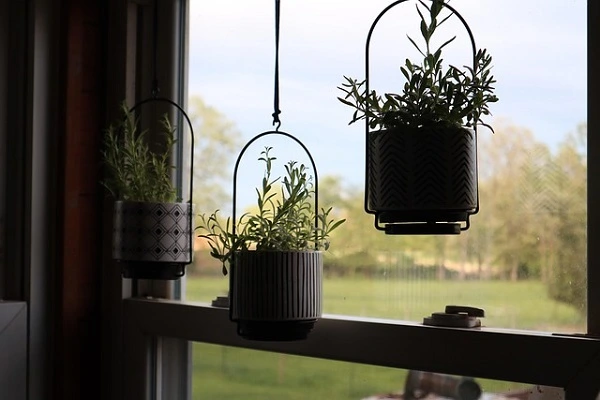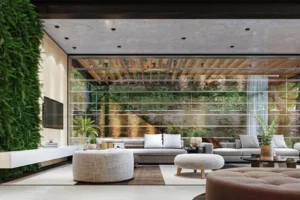If you’ve ever noticed one side of your indoor setup thriving while the other lags behind, light imbalance might be the culprit. Even in small-space designs, lighting doesn’t always hit every angle equally.
This is a common issue in tightly packed racks or corners where natural light only reaches part of the structure. Over time, some crops stretch, lean, or fade because they’re simply in the shadows too often.
The solution? Make it move. A spinning rack helps evenly expose every side to the available light—without the need for extra lamps or constant plant rearranging.
In this article, we’ll explore how to build a compact rotating rack that eliminates dark spots and maximizes every beam of light your setup gets.
What Causes Shaded Spots in Indoor Gardening Racks
Lighting is everything in indoor setups, but it’s rarely perfect—especially when space is tight. Whether you’re using artificial light or squeezing your build near a window, shaded spots are practically guaranteed.
Most indoor gardens rely on a fixed light source. It might be a grow light panel, a hanging bulb, or filtered sunlight from one direction. But that means only one side of your setup is in the spotlight.
Over time, the plants or crops closest to the light grow stronger, faster, and fuller. The opposite side? Not so much. You’ll often see uneven growth, stretching toward the light, or weak lower leaves.
Why does this happen so easily? Because:
- Light naturally diffuses unevenly in indoor rooms.
- Walls, furniture, and shelving cast long shadows.
- Taller plants block shorter ones.
- Light angle doesn’t shift like the sun does outdoors.
Even when using multiple lights, the angles can’t cover every corner unless you’re flooding the whole space—which isn’t efficient or practical in most homes.
For multi-tier racks or tall setups, the issue gets worse. Bottom tiers may get very little usable light unless you install extra bulbs or adjust daily. That’s time-consuming and often frustrating.
If you’ve ever rotated containers by hand every morning, you already know this is a real problem. It’s not about neglect—it’s a design flaw.
The solution lies not in more light, but in smarter exposure. That’s where the idea of a rotating rack begins to make sense. Instead of chasing light, let your rack do the turning.
How a Rotating Rack Solves Light Imbalance
You don’t need more light—you just need to use it better. A rotating rack helps distribute existing light evenly, turning a fixed light source into a dynamic one without adding extra heat or electricity.
Mimicking the Movement of the Sun
Outdoor plants naturally receive sunlight from multiple angles as the sun moves across the sky. Indoor setups are static, so unless you’re constantly turning things by hand, some sides always get left behind.
A simple spinning base can fix that. By rotating your rack slowly—either a few times a day or on a schedule—you mimic that natural shift in light exposure.
What Rotation Improves
- Healthier structure: Crops grow upright, not leaning toward a single source.
- Even development: Leaves, stems, and fruits mature more uniformly.
- Better airflow: Rotation helps reduce stale air pockets and humidity build-up.
- Energy efficiency: One well-placed light can now cover more surface over time.
This isn’t just about aesthetics—it’s about performance. Rotation supports consistent photosynthesis across all surfaces, which leads to stronger roots and faster cycles.
Manual or Automatic?
While automated turntables exist, they’re often bulky or overpriced. For small-scale indoor builds, a manual spin once or twice a day can do the trick. You stay hands-on without much extra effort.
Plus, designing a rack to rotate doesn’t require complicated engineering. A basic turning base or pivot setup will do.
In short, spinning your rack helps you squeeze the most out of your existing light without expanding your footprint or energy use.
Planning the Perfect Spin: Key Considerations Before You Build
Before grabbing tools and parts, it’s worth thinking through a few design details. A spinning rack isn’t just about motion—it’s about stability, access, and smart use of space.
Weight Distribution Matters
If your setup holds containers with water, balance becomes essential. Uneven weight will cause wobble or lean, which can damage plants or tip the whole rack.
Try to:
- Keep heavy containers near the base
- Distribute weight symmetrically
- Use materials with a good strength-to-weight ratio
How Tall Is Too Tall?
Indoor ceilings limit height. Add rotation to that, and you’ll want to make sure nothing scrapes the ceiling or wobbles on the spin. If you’re stacking, allow space between tiers so light and airflow reach all levels.
Pro tip: test height and spin clearance before final assembly.
Rotation Style Options
You’ve got two main approaches:
- Turntable base: Like a Lazy Susan, simple and best for small racks
- Rotating arms or trays: Modular, more customizable, great for shelving flexibility
Both work—pick what fits your space and skill level.
Safety and Surface
Spinning racks should stay put when you’re not turning them. Consider adding:
- Rubber pads or grippy feet
- Locking casters
- Rotation limiters (like pegs or brackets)
Also, think about your floor. On tile or hardwood, even a small shift can cause damage or slippage. Test the movement before loading it up.
With the right prep, your spinning rack will not only function smoothly—it’ll feel like it belongs in your space.
Tools and Materials Checklist for a DIY Spinning Rack
You don’t need a full workshop to build a spinning rack. With a few simple tools and affordable materials, you can put one together in a weekend.
Start by deciding how large and how many tiers your rack will have. This helps you estimate weight and choose the right hardware.
Basic Tools You’ll Need
- Power drill or screwdriver
- Measuring tape
- Level (a must for balance)
- Saw (for custom shelf sizes)
- Pencil or chalk for marking
- Safety gloves (if cutting or drilling wood or metal)
Materials to Build the Structure
- Shelving boards or trays
- PVC pipe, wood posts, or lightweight metal rods for the frame
- Turntable hardware (like a Lazy Susan bearing)
- Screws, brackets, and fasteners
- Rubber feet or floor pads to prevent sliding
- Optional: casters with locks for mobility
Optional Enhancements
- Waterproof sealant or paint for longer life
- Reflective tape or panels to increase light reach
- Bungee cords or clips to hold containers in place
- Felt pads between tiers to reduce friction
Budget Tip
You can repurpose parts from old furniture, dish racks, or shelving units. Look for Lazy Susan trays, unused plant stands, or anything with a solid spinning base.
Before buying anything new, take a quick look at what’s already in your home or storage. You might be halfway there already.
Having everything ready ahead of time will make your build smoother—and much more fun.
Step-by-Step Assembly: Building Your Spinning Rack
Let’s bring it all together. If you’ve gathered your tools and materials, it’s time to start building. This process can be done in a few hours, even if you’re working in a small space.
Step 1: Build the Frame
Start with your vertical supports. Whether you’re using PVC, wood, or metal rods, make sure they’re cut to equal height. Secure them into a base platform using brackets or corner fasteners.
Attach horizontal shelves or trays at even intervals. Use a level to check alignment. Tighten all connections to prevent wobble.
Step 2: Add the Rotation Mechanism
Place your turntable hardware on the bottom of the frame. This could be a Lazy Susan bearing or a homemade spinner using furniture wheels. Secure it firmly to the base.
Then, attach the base to your floor protector—like rubber pads or a stable mat. Test the spin with an empty frame before loading anything.
Step 3: Load and Balance
Add containers or trays gradually. After placing each one, give the rack a gentle spin to test balance. Rearrange as needed to keep weight evenly distributed.
Use clips or barriers to keep containers secure while turning. If you plan to spin it manually, mark a spot to grab without disrupting the setup.
Step 4: Test It in Place
Move your rack near its final location. Check for clearance, spin room, and lighting reach. Give it a few full turns to make sure nothing scrapes or shifts.
Once it spins smoothly, you’re ready to integrate it into your setup and let it do its job.
Tips to Keep Your Spinning Rack Safe and Efficient
Once your spinning rack is up and turning, it’s easy to forget it needs a little attention now and then. A few simple habits can help you avoid accidents, protect your floor, and keep everything running smoothly.
Stability First
A spinning setup is more dynamic than a static rack. That means any loosened bolt or tilted weight can cause wobble or tipping. Every few weeks, do a quick check for:
- Loose screws or brackets
- Warped shelving from moisture
- Weight shifts from uneven containers
Tighten what needs tightening and replace parts that feel unstable.
Watch the Weight
It’s tempting to load every inch of your rack, but remember: motion adds strain. Distribute your containers evenly, and don’t stack heavier items high. If the top feels top-heavy, shift those items lower.
Even small changes can throw off balance over time, especially after watering.
Smooth Spinning
Dust and debris can collect in the turntable hardware. Once a month, wipe it down and check for friction. A little food-safe lubricant or graphite powder can go a long way to keep it gliding without noise or resistance.
Keep It Dry
If you’re watering from the top, be mindful of drips. Moisture buildup near the spin mechanism can cause rust or swelling, depending on your materials. Use trays, liners, or sealant to protect the base.
By keeping an eye on a few key areas, your rack will stay safe, easy to use, and ready to deliver balanced exposure every day.
Final Thoughts
Creating your own spinning rack isn’t just a fun weekend project—it’s a smart solution to a common indoor gardening challenge. By eliminating shaded spots, you give your entire setup equal access to light, better airflow, and a more consistent environment.
The best part? You don’t need a big budget or a large space. With a little planning and a handful of materials, you can build something functional, efficient, and custom to your needs.
As with any system, maintenance and observation are key. Keep it balanced, clean, and secure, and it’ll serve you for seasons to come.
Whether you’re just refining your setup or trying something new, a rotating rack might be the upgrade you didn’t know you needed.




